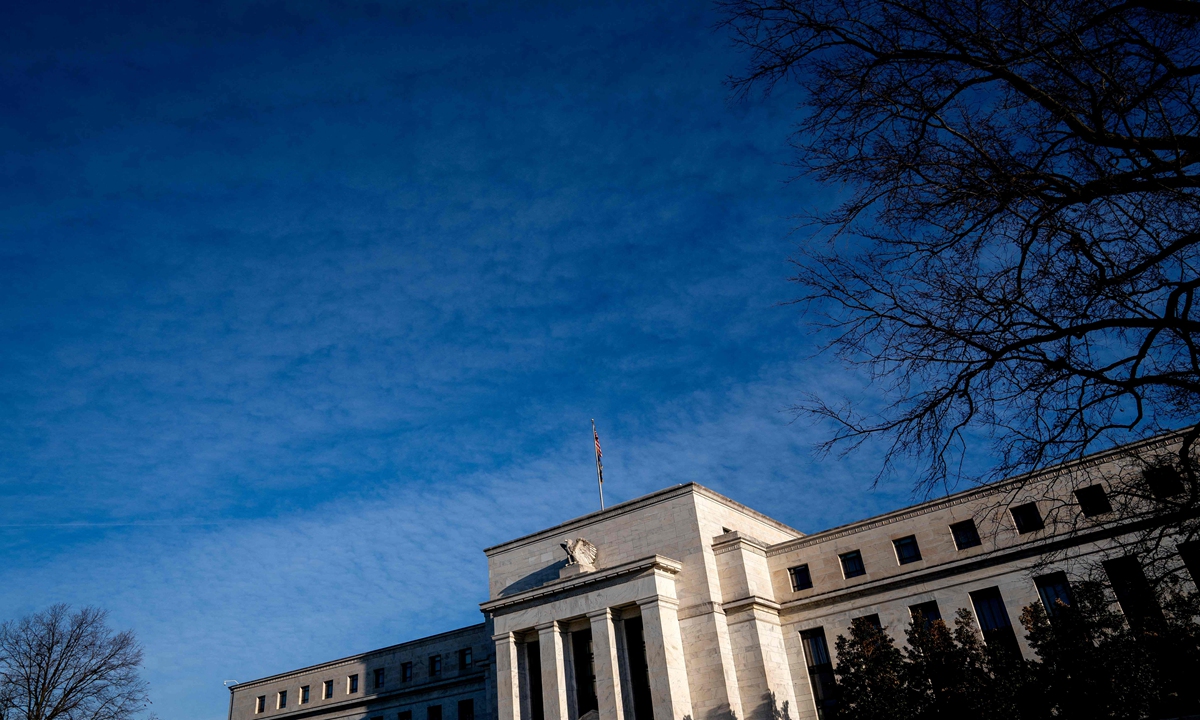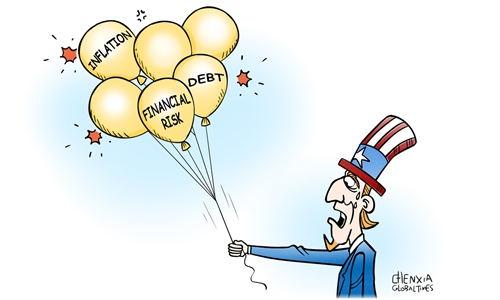Yuan expected to remain stable despite potential impact of Fed's policy maneuvering: experts
Major economies urged to get prepared for future volatility


A view of the US Federal Reserve in Washington DC Photo: VCG
Editor's Note: The US Federal Reserve (Fed) Tuesday released the minutes of the Federal Open Market Committee (FOMC) meeting held from October 31 to November 1. The minutes did not indicate an immediate need for further interest rate hikes. Recently, the US dollar has been on a weakening trend, and some investors are betting on a possible rate cut by the Fed in 2024. What is the likelihood of the Fed initiating a rate reduction in 2024? What impact will this have on global capital markets and on the foreign exchanges market? In this context, can the Chinese yuan maintain its currency stability? Three economists shared their views as below.
Yu Xiang, a senior fellow at the Center for International Security and Strategy, Tsinghua University
Recent minutes from the Fed's meeting reveal a predisposition among officials to maintain current interest rates throughout the year. With inflation persistently exceeding the 2 percent policy target and the approaching an election year in the US in 2024, the ideal window for any Fed interest rate adjustment might be in December this year.
While the third quarter witnessed an unexpected 4.9 percent growth in the US economy, a noticeable decline is anticipated in the fourth quarter. The scale and duration of the economic downturn will significantly influence Fed's thinking on monetary policy.
Should the economic downturn persist into the first half of the next year, there is speculation that the US economy might enter a "mild recession," prompting the Fed to cut interest rates - a potential reversal of the aggressive rate hikes since March 2022.
Over the past year, the rigorous tightening of US monetary policy has bolstered the US dollar and attracted capital from global economies. As global markets anticipated the shift in US monetary policy and proactively prepared for potential impacts, the sudden rate cut from the Fed is expected to be manageable for most nations.
Countries globally are enhancing their management of capital flows, implementing interventions in financial markets to mitigate the impacts of US interest rate hikes. The measures enable countries to effectively contend with the repercussions of US interest rate hikes, ensuring a more controlled response.
As to the impact on the exchange rate of the Chinese yuan, although a shift in US monetary policy may have short-term effects, the anticipated stable recovery of the Chinese economy and increasing confidence suggest that the yuan's exchange rate will remain largely steady in the coming months.
In the context of profound geopolitical adjustments, a sustained recovery of the Chinese economy will likely attract more investments into China, supporting the stability of the yuan.
Aichi Amemiya, a senior US economist at Nomura
The November FOMC meeting minutes were not surprising with a number of key lines nearly identical to the September minutes. Participants continued to keep options open for further rate hikes. Unlike the September minutes, there was no indication that another rate hike was likely. However, the minutes noted that further tightening would be appropriate if there was insufficient progress on inflation.
The Fed are uncertain about the medium-term path for policy, but are content to remain in "wait-and-see" mode for now. The dovish statement and press conference supports our expectation of no more rate hikes while uncertainty for the medium-term monetary policy outlook remains.
The recent rise in long-term yields appears to be the main driver for the Fed's cautious approach. Fed chair Powell noted that "persistent changes" in financial conditions can reduce the need for rate hikes. He declined to quantify the equivalence, but the recent rise in longer-term yields is roughly equivalent to Powell's assessment of current policy was torn between two contradictory ideas.
On the one hand, he insisted that the current stance of policy was restrictive, and that the peak impact of past tightening is yet to come. At the same time, he conceded significant uncertainty around the appropriate stance of policy, claiming the FOMC is "not confident" that the current level of rates will push inflation back to 2 percent.
The current "wait-and-see" stance of policy is likely to be temporary. The Fed do not have high conviction that growth and inflation are slowing, and conceded that they may have to deliver further rate hikes. It is telling that the FOMC's response to uncertainty is to remain on hold, but data dependence is likely to reemerge sooner or later.
Zhu Keli, executive director of China Institute of New Economy
There is an increased possibility of the Fed initiating interest rate cuts in 2024. However, the specific magnitude and timing of the rate cuts will depend on future economic data and market trends. Currently, investors' expectations for rate cuts by the Fed are rising. If the US economic growth slows down or inflation pressures further ease, the Fed may consider lowering interest rates.
It is uncertain whether the Fed will engage in "aggressive rate cuts" due to the uncertainty in future economic and financial markets. If there are significant fluctuations in the global economy and financial conditions, the Fed may take more aggressive measures to address them.
If the Fed cuts its benchmark rates, it will have an impact on global capital markets and the foreign exchanges market. The rate cuts could lead to a decline in the value of the US dollar, while the currencies of other countries will likely appreciate.
Additionally, the rate cut could prompt investors to shift their funds from Wall Street to other markets, reinforcing capital flows on a global scale. Although a rate cut may have certain impacts on certain markets, it does not necessarily mean it will lead to a financial crisis.
The fundamentals of the Chinese economy are sound, and there is ample room for policy maneuvering, which will help maintain the basic stability of the yuan. However, the factors volatile geopolitical tensions in the world may exert some pressure on the yuan.



